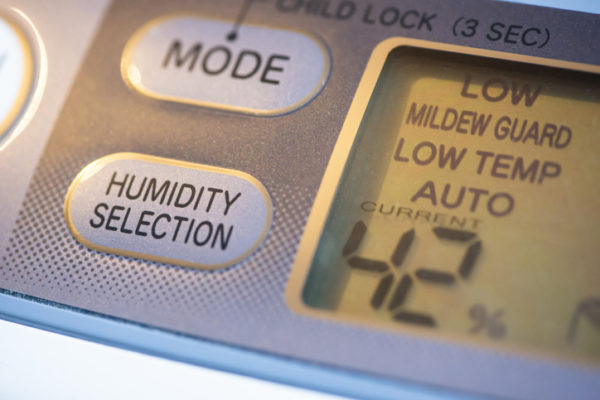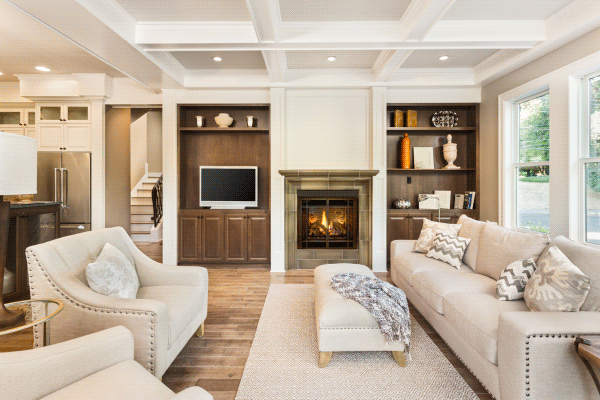Feeling hot and sticky during the summer is a familiar feeling. And while you can’t change the oppressive air outdoors, it’s a different story inside your home.
Enter the dehumidifier—a home appliance that removes water vapor from the air to help you control humidity. There are some clear signs when a dehumidifier is a must: dampness on windows, mildew growth, musty odors, peeling paint. But even when humidity’s effects aren’t so obvious, this tool can be an important summertime addition to your home. Here’s why.
3 Benefits Of Using A Dehumidifier During The Summer
If you want your home to remain as comfortable as possible during the summer months, you should consider using a dehumidifier to reduce the amount of moisture in the air. Using a dehumidifier during the summer also improves the air quality inside your home and can eliminate potential allergens like mold and mildew.
1. Improves Health
Inhaling damp indoor air can lead to coughing, wheezing and asthma symptoms, says the EPA. But keeping the relative humidity in your home between 30 and 50 percent will considerably reduce the growth of dust mites and other allergens. The EPA also says that managing humidity could reduce the level of toxins like formaldehyde from things like wood products, cigarette smoke, paints, varnishes, and carpets, which can be released when indoor air is too hot and humid.
 2. Prevents Damage
2. Prevents Damage
Excessive humidity can encourage mold growth and attract pests like termites. Over time, this can cause decay and corrode building materials, says the EPA, resulting in damage to wooden support beams and floors, paint, furniture and insulation. Prolonged exposure to moisture can also warp books and may even take a toll on electronics.
3. Saves Money
Since dry air feels cooler, using a dehumidifier for summer may help you save money on cooling bills by allowing you to use your air conditioner less (or set it at a higher temperature). One study from the Department of Energy conducted in Florida found that a whole-house dehumidifier used with a central air-conditioning unit would yield projected space-conditioning energy savings of 8.2 percent over the course of a year.
How To Buy A Dehumidifier
Size it Right
“Size” doesn’t reference the dimensions of the dehumidifier, but rather its capacity—how many pints of water it’s capable of removing from the air during a 24-hour period. For a home with lower levels of humidity, Energy Star recommends using a 10- to 16-pint size for 500 square feet and up to a 26- to 44-pint size for 2,500 square feet, depending on the level of dampness.
 Home in on Features
Home in on Features
Most portable dehumidifiers have a removable water bucket and a warning light to alert you when it’s full, as well as a fitting for a hose connection (so you don’t have to empty the water tank). You may also want to look for a frost sensor to keep frost from forming on the condensing coils if the temperature drops below 65 degrees.
Go Green
Look for an Energy Star-certified model, which will have more efficient refrigeration coils, compressors and fans than a conventional model and will use nearly 30 percent less energy.
Consider a Whole-House System
Portable units cost less up front, but the capacity of moisture removal is much lower and the operating cost tends to be higher, says Bill Ramsey, a heating ventilation and air conditioning (HVAC) professor in Georgia. A custom whole-house unit will need to be sized and installed by a contractor, but in the long term, he says, the lower operating costs and stable comfort can be worth the investment.
Shop in the Off-Season
You can often find the best deals for portable dehumidifiers in late summer and early fall, says Ramsey. At that time, too, you’ll likely be able to negotiate a better price for a whole-house system than you’d get when the weather is humid and contractors are busy.
Where To Put Your Dehumidifier
Most dehumidifiers have top-mounted air discharge and can be placed against walls, but side-discharge units should be operated away from walls and furniture so that air can circulate freely, notes Energy Star. To increase efficiency, make sure to close doors and windows to the room while it’s running.
Here’s another way to breathe easier: homeowners or renters insurance through the GEICO Insurance Agency. See if you could save money with a free, fast quote.
Read more: 5 Indoor Plants That Could Improve Your Health
By Nicole Cherie Jones










Leave a comment